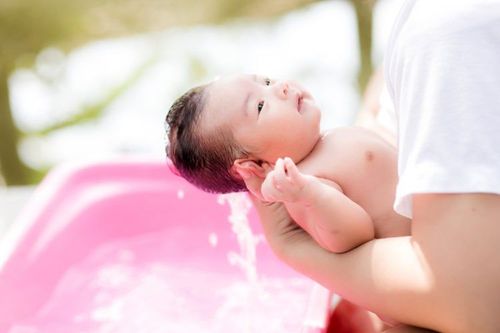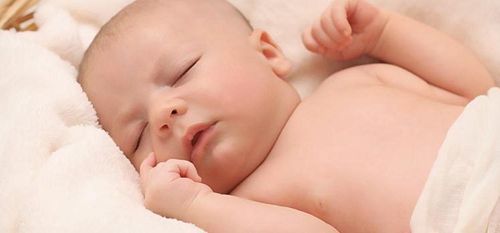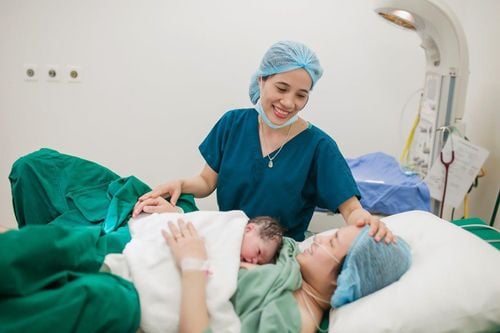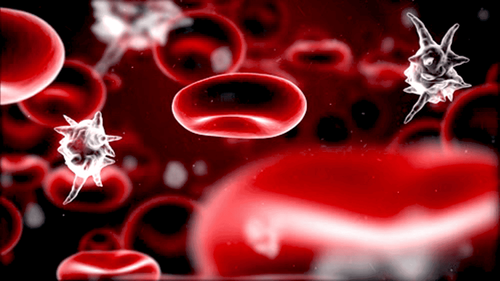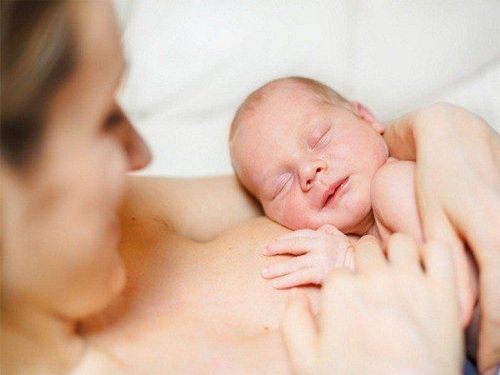This is an automatically translated article.
The article was consulted with Master, Doctor Nguyen Thi An - Pediatrician - Neonatologist - Department of Pediatrics - Neonatology - Vinmec Ha Long International General Hospital.Bathing a newborn is an essential care to help clean the skin and prevent skin diseases that are very common in the newborn period. In the process of bathing, if not careful, it can cause burns or hypothermia.
1. Burns in infants
The reason is that the water is too hot and the baby's skin is fragile, very easy to burn.To prevent burns in babies, when bathing, it is necessary to check the temperature of the water before bathing the baby. Put cold water in the pot first, then pour hot water in until the appropriate temperature is about 38 degrees Celsius to avoid making the wall of the pot hot.
Burns in children have 3 levels. The most common is first-degree burns, parents can take care of their children at home.
1.1 1 degree burns
Recognizing signs: The skin is red, painful, slightly swollen, the skin has not been blistered.1.2 2 degree burns
Signs of identification: The burn causes the skin to be red, burning, painful, and appears a blister containing fluid inside but not bursting.Usually in cases of second degree burns, parents should take the child to the hospital for examination and treatment by doctors.
1.3 3 degree burns
Recognizing signs: The surface of the skin is dry and flaky, seeing the deep depression inside, the patient is extremely painful.In this case, the child must be taken to the emergency room, not treated at home.
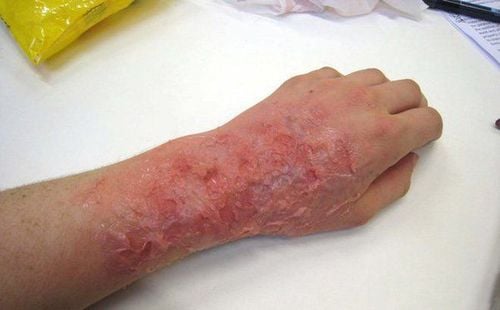
Bỏng độ 3 rất nguy hiểm và có thể dẫn đến nhiễm trùng nặng
2. Hypothermia
2.1 Cause
Breastfeeding is delayed after many hours The delivery room is not warm enough The baby is naked immediately after weighing and bathing Poor suckling reduces heat production leading to hypothermia Infants are wet, or undressed.2.2 Degrees of hypothermia
Mild: 36 degrees -36.5 degrees C Medium: 32 degrees - 35 degrees C Severe : < 32 degrees C2.3 Signs that a child has hypothermia
Tachycardia, possibly arrhythmia. Lower blood pressure. Acidosis worse than Hypoglycemia. Oxygen saturation decreased. Respiratory failure worsens.2.4 Treatment when the child has hypothermia
2.4.1 General principles
When detecting a child with hypothermia, it is necessary to wear warm enough clothes for the child, the room temperature is 25 - 28 oC and there is no draft. Breastfeed and feed the baby to provide energy as soon as possible (if the baby can't breastfeed, it must be fed through a feeding tube)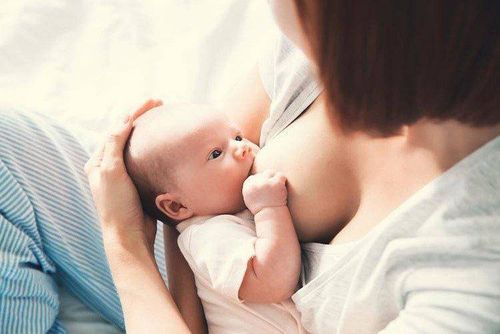
Hãy cho trẻ bú sữa mẹ khi bị hạ thân nhiệt
2.4.2 Treatment in hospital
Depending on the degree of hypothermia, there is an appropriate treatment:When the temperature is 36 degrees Celsius: Put the baby in skin-to-skin contact, lie close to the mother (temperature 25 degrees Celsius - 28 degrees Celsius). Wrap the baby in a warm soft cloth, use a heater if the room is cold When the temperature is 32 degrees Celsius - 35 degrees Celsius: Put the baby under the heating lamp, use a mattress containing warm water, the warming process must be continuously assessed the baby's condition every hour for proper temperature adjustment. Hypothermia < 32 degrees C: Put the baby in an incubator with the temperature adjusted to 35 degrees - 36 degrees C. Feed the baby to provide energy. Check the incubator every hour.
2.4.3 Re-handling the house
Put the baby in skin-to-skin contact with the mother by placing the baby on the mother's chest. Put extra blankets on the baby's back to warm the baby's back Check the baby's temperature every 1 hour until the baby's body temperature is completely normal. If the baby is still lethargic and refuses to breastfeed, the child must be hospitalized for monitoring.3. How to bathe a newborn
Hypothermia and burns are most commonly caused by improper bathing. Take the steps below to make sure your baby's bath is safe.Step 1: Remove all clothes, hats, gloves, and foot covers of the child, then wrap the child in a clean, warm towel.
Step 2: Hold the baby in the right hand posture: arms supporting the back, hands supporting the head.
Step 3: Wash your face in order: eyes, nose, ears, mouth.
Use a cotton ball dipped in clean water to gently wipe the eye from the inner corner of the eye outward, then use another cotton ball to wipe the other eye in the same order. Then use a small soft cloth handkerchief to wipe your face from the middle along the nose to both ears, avoiding getting deep into the ears, paying attention to carefully wipe the area behind the ears and neck folds. Step 4: Shampoo: wet hair, rub soap (shampoo) from front to back of the child's head. Use clean water to wash and dry the baby's head.
Step 5: Bath the baby.
Partial bath or full body bath depending on whether the navel has not fallen off or has fallen off. If you take a partial bath, cover the unbathed part, then dry off the part after bathing in the following order:
Bathing the neck, armpits, arms, chest, abdomen. Shower back, buttocks, legs. Bathing the genitals. Step 6: Dry the whole body.
Step 7: Dress, swaddle, keep warm.
Step 8: Take care of the umbilical cord if the umbilical cord has not fallen off (see umbilical cord care).
Step 9: Put the baby in bed, warm.
Step 10 : Clean up the tools and record the follow-up care note.
Note:
Bathe children in a closed place, without wind. Pay close attention to the hygiene of the genitals. When washing hair, be careful not to let soap get into your child's eyes. Clean the basin after bathing the child. In winter, when bathing children, parents need to be careful, because children are susceptible to sudden hypothermia, especially at night, when the weather is cold and there are other accompanying diseases. Therefore, other family members, as well as medical staff, need to pay a lot of attention and actively learn and master first aid when having hypothermia. If the condition does not improve, or consciousness worsens, it is necessary to quickly bring the victim to the hospital for appropriate and timely treatment, find the cause and treat, to avoid leaving serious consequences.
Please dial HOTLINE for more information or register for an appointment HERE. Download MyVinmec app to make appointments faster and to manage your bookings easily.





